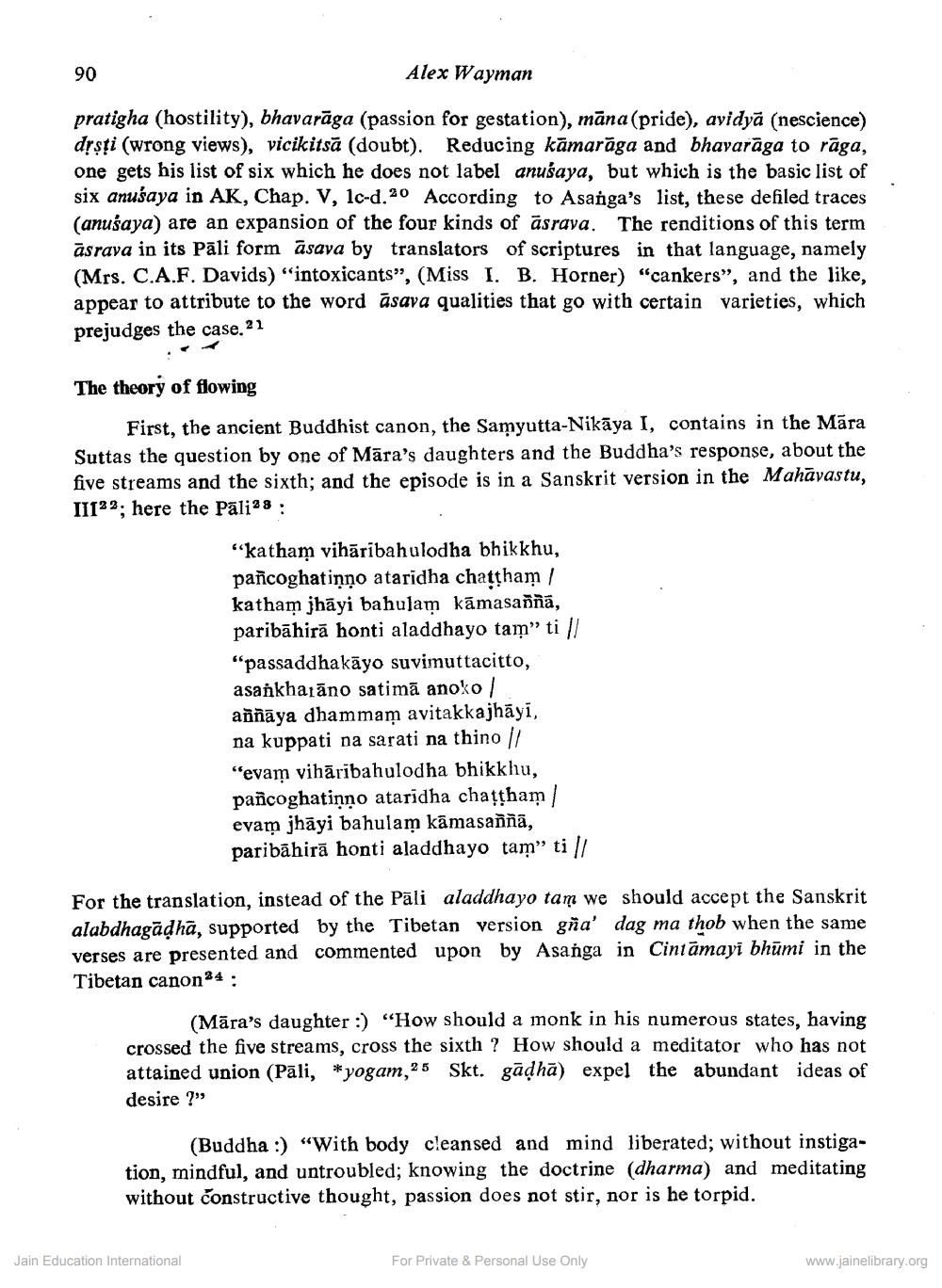Book Title: Asarva how does it flow Author(s): Alex Wayman Publisher: Z_Aspect_of_Jainology_Part_3_Pundit_Dalsukh_Malvaniya_012017.pdf View full book textPage 3
________________ 90 Alex Wayman pratigha (hostility), bhavarāga (passion for gestation), māna(pride), avidyā (nescience) drsti (wrong views), vicikitsā (doubt). Reducing kamarāga and bhavarāga to rāga, one gets his list of six which he does not label anušaya, but which is the basic list of six anuśaya in AK, Chap. V, lc-d. 20 According to Asanga's list, these defiled traces (anušaya) are an expansion of the four kinds of asraya. The renditions of this term asrava in its Pāli form āsava by translators of scriptures in that language, namely (Mrs. C.A.F. Davids) "intoxicants", (Miss I. B. Horner) "cankers", and the like, appear to attribute to the word asava qualities that go with certain varieties, which prejudges the case. 21 The theory of flowing First, the ancient Buddhist canon, the Samyutta-Nikāya I, contains in the Māra Suttas the question by one of Māra's daughters and the Buddha's response, about the five streams and the sixth; and the episode is in a Sanskrit version in the Mahāvastu, II122; here the Pāli28 : "katham vihārībahulodha bhikkhu, pancoghatinno ataridha chattham / katham jhāyi bahulam kāmasaññā, paribāhirā honti aladdhayo tam” ti // "passaddhakāyo suvimuttacitto, asankharāno satimā anoko / aññāya dhammam avitakkajhāyi, na kuppati na sarati na thino || “evam vihāribahulodha bhikkhu, pancoghatinno ataridha chattham evam jhāyi bahulam kāmasaññā, paribāhirā honti aladdhayo tam” ti // For the translation, instead of the Pāli aladdhayo tam we should accept the Sanskrit alabdhagadha, supported by the Tibetan version gña' dag ma thob when the same verses are presented and commented upon by Asanga in Cintāmayi bhūmi in the Tibetan canon24 : (Māra's daughter :) "How should a monk in his numerous states, having crossed the five streams, cross the sixth ? How should a meditator who has not attained union (Pāli, *yogam,25 Skt. gādhā) expel the abundant ideas of desire ? (Buddha :) “With body cleansed and mind liberated; without instigation, mindful, and untroubled; knowing the doctrine (dharma) and meditating without constructive thought, passion does not stir, nor is he torpid. Jain Education International For Private & Personal Use Only www.jainelibrary.orgPage Navigation
1 2 3 4 5 6 7 8
